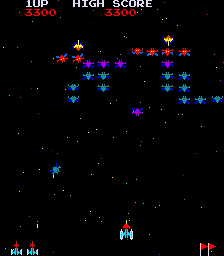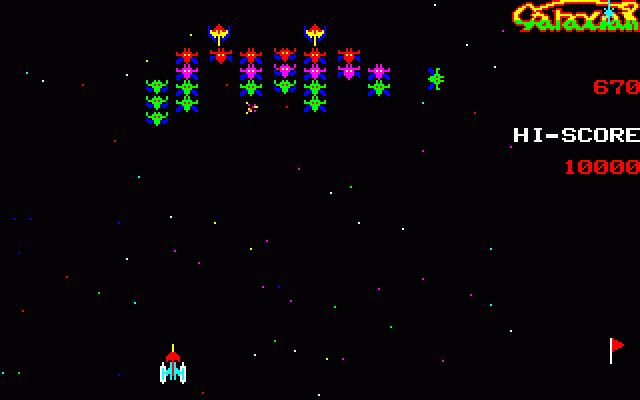
The History of How We Play is a blog dedicated to the examination of video games, run by Ethan Johnson. Usually the improvement would be small, such as adding a dedicated soundchip (which Namco was also soon to do with their 1980 line-up, including Pac-Man). Nichibitsu had Moon Cresta, Konami had The End, and Taito would release Phoenix, all minor upgrades to the concept and hardware. Nichibitsu’s Moon Alien Part 2 and Irem’s Uniwars were more or less simple palette swaps, but steadily these licensees began to explore their own takes with this new hardware. Immediately after the first Galaxian sublicenses appeared, games which built on the Z80-based sprite system used in that game quickly followed. the sprites seen on screen, and interprets user control into actions that are. The Namco Galaxian arcade system board, for the 1979 arcade game Galaxian, featured animated, multi-colored sprites. The game was highly popular upon its release, and has been a focus of competitive gaming ever since. Galaxian Revolution represents a coalescence of the classic arcade game.

It was published by Namco in Japan and imported to North America by Midway. While there was no particular indication that they could use the basic hardware in their own creations, imitation of the Galaxian board would become a cornerstone of the Japanese video game industry from that point forward. Galaxian ( Gyarakushian) is a fixed shooter arcade game developed by Namco in 1979.

All of these companies had started in video games making Breakout style games and all of them would take their experience manufacturing Galaxian to heart. Among them were Nichibitsu, Irem, and Konami. These companies included the bigwigs, Taito and Sega, but they too went to the smaller manufacturers. Irem poster featuring an official clone of Galaxian.


 0 kommentar(er)
0 kommentar(er)
